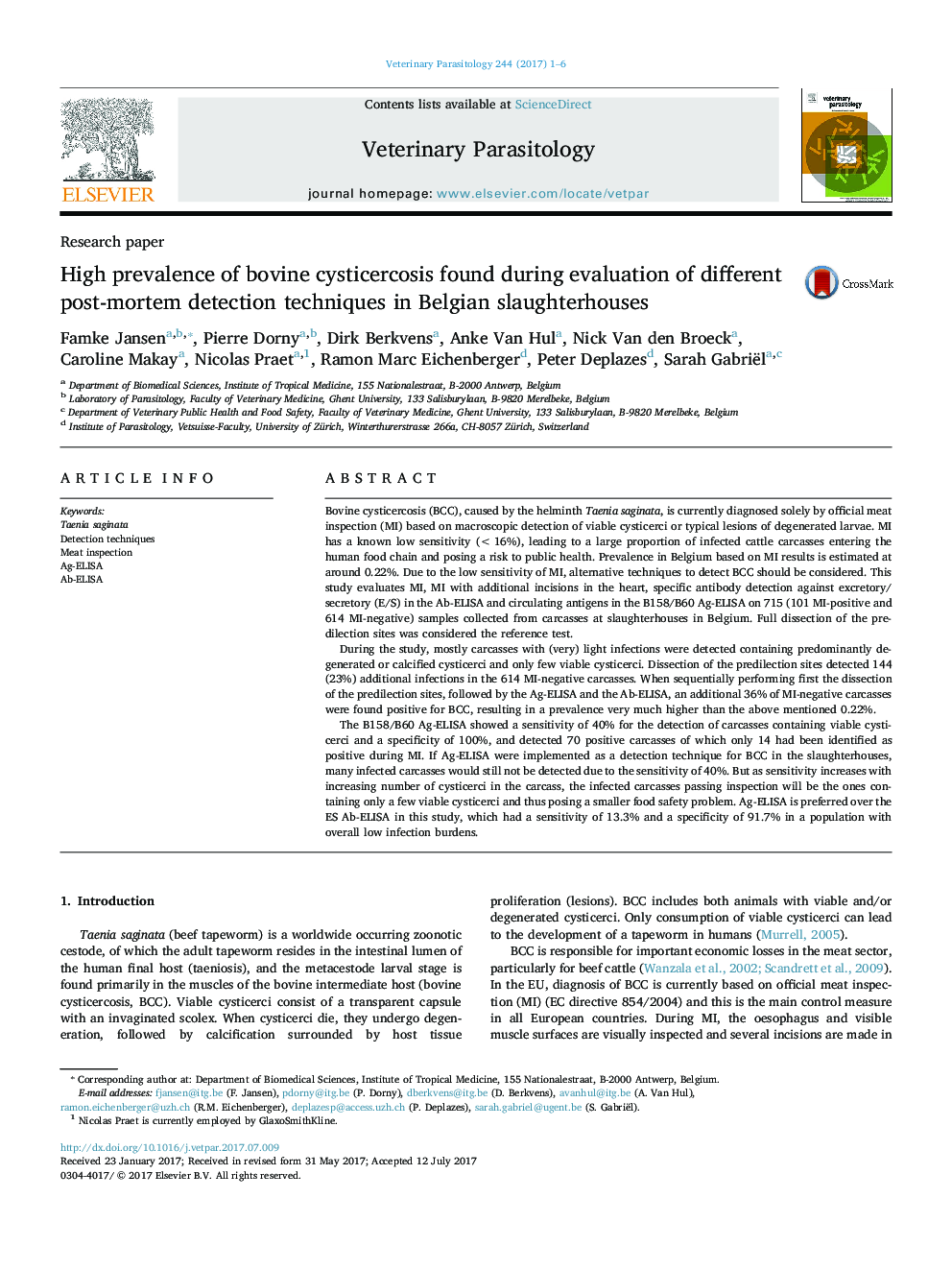| کد مقاله | کد نشریه | سال انتشار | مقاله انگلیسی | نسخه تمام متن |
|---|---|---|---|---|
| 5545544 | 1555632 | 2017 | 6 صفحه PDF | دانلود رایگان |

- Several post-mortem detection techniques for bovine cysticercosis (BCC) are evaluated.
- Sensitivity of meat inspection found even lower than previously thought.
- At least 36% of Belgian cattle are BCC positive for one or more detection techniques.
- The B158/B60 Ag-ELISA could represent an improved technique for detecting current infections.
Bovine cysticercosis (BCC), caused by the helminth Taenia saginata, is currently diagnosed solely by official meat inspection (MI) based on macroscopic detection of viable cysticerci or typical lesions of degenerated larvae. MI has a known low sensitivity (<16%), leading to a large proportion of infected cattle carcasses entering the human food chain and posing a risk to public health. Prevalence in Belgium based on MI results is estimated at around 0.22%. Due to the low sensitivity of MI, alternative techniques to detect BCC should be considered. This study evaluates MI, MI with additional incisions in the heart, specific antibody detection against excretory/secretory (E/S) in the Ab-ELISA and circulating antigens in the B158/B60 Ag-ELISA on 715 (101 MI-positive and 614 MI-negative) samples collected from carcasses at slaughterhouses in Belgium. Full dissection of the predilection sites was considered the reference test.During the study, mostly carcasses with (very) light infections were detected containing predominantly degenerated or calcified cysticerci and only few viable cysticerci. Dissection of the predilection sites detected 144 (23%) additional infections in the 614 MI-negative carcasses. When sequentially performing first the dissection of the predilection sites, followed by the Ag-ELISA and the Ab-ELISA, an additional 36% of MI-negative carcasses were found positive for BCC, resulting in a prevalence very much higher than the above mentioned 0.22%.The B158/B60 Ag-ELISA showed a sensitivity of 40% for the detection of carcasses containing viable cysticerci and a specificity of 100%, and detected 70 positive carcasses of which only 14 had been identified as positive during MI. If Ag-ELISA were implemented as a detection technique for BCC in the slaughterhouses, many infected carcasses would still not be detected due to the sensitivity of 40%. But as sensitivity increases with increasing number of cysticerci in the carcass, the infected carcasses passing inspection will be the ones containing only a few viable cysticerci and thus posing a smaller food safety problem. Ag-ELISA is preferred over the ES Ab-ELISA in this study, which had a sensitivity of 13.3% and a specificity of 91.7% in a population with overall low infection burdens.
Journal: Veterinary Parasitology - Volume 244, 15 September 2017, Pages 1-6